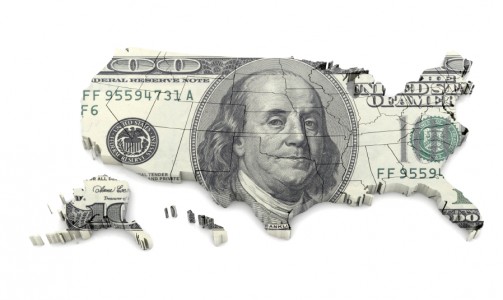Income And Spending: Whopper Inside
The headline was more-or-less as expected:
Personal income increased $43.9 billion, or 0.3 percent, and disposable personal income (DPI) increased $45.2 billion, or 0.4 percent, in January, according to the Bureau of Economic Analysis. Personal consumption expenditures (PCE) increased $48.1 billion, or 0.4 percent. In December, personal income decreased $5.5 billion, or less than 0.1 percent, DPI decreased $9.7 billion, or 0.1 percent, and PCE increased $6.5 billion, or 0.1 percent, based on revised estimates.
Meh. Now look at this:
Personal current transfer receipts increased $29.8 billion in January, compared with an increase of $4.0 billion in December. The January estimates of current transfer receipts reflected several special factors. A 1.5-percent cost-of-living adjustment to social security benefits and to several other federal transfer payment programs added $14.2 billion to the January increase. Medicaid benefits were boosted $19.2 billion due to expanded coverage under the ACA. Other government social benefits to persons was boosted $14.7 billion, reflecting increases in several refundable tax credits, including health insurance premium subsidies paid in the form of tax credits to enrollees of the ACA exchanges.
Wow.
Annualized this would be approximately $360 billion were it to be repeated. Of course the assumption is that it won’t be, but this is utterly huge (and deficit-boosting); to put this in perspective it is about 2% of GDP on an annualized basis! That’s going to show up in the GDP print for the first quarter — count on it. And it will also either blow the deficit to hell or not be repeated; in the first case we know the result, in the latter it will produce an artificial bump in the GDP print that may be (foolishly) relied on by the market.
Contributions for government social insurance — a subtraction in calculating personal income — increased $9.1 billion in January, in contrast to a decrease of $0.6 billion in December.
I love the word “contribution” when the real word is tax. But this is a big number too; it comes partly from increases in the social security wage base (which is an annual thing.)
Personal “saving” (e.g. funds available to pay down debt or invest) was down slightly from December; both DPI and PCE appear to be tracking. The news in the PCE area is that it was all services; both durables and non-durable goods were down with the latter down materially (0.7%)
For the full year 2013 disposable income was up 1.9% while spending was up 3.1%.


